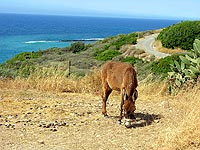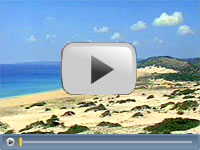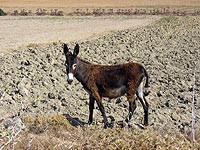
North Cyprus Wild Donkeys of Karpas Peninsula.
 |
the north cyprus travel guide |
 |
|
North Cyprus Wild Donkeys
North Cyprus wild donkeys are not so much wild as liberated, being descended from Cypriot domestic donkeys left to roam over the Karpas Peninsula National Park. Now a protected animal, the Karpas donkey numbers have dwindled from thousands to around 500 animals today, who live on the remotest parts of the peninsula. These grey, brown or black donkeys are very bad tempered and intolerant, so it is advisable not to get too close, and to warn children to look but not touch. Donkeys on North CyprusThe donkeys played a very important role in agriculture on the Karpas peninsula, to carry olives from the groves and cereals fro the fields to the mills. Every household had at least one, if not two donkeys, which were sure-footed and able to carry more than a horse. The British Army even used them for transport during World War II, as they were so suited to the rough terrain. However, by the 1970s, tractors and trucks began to replace the donkeys.
Donkeys on the Karpas PeninsulaDuring the 1974 intervention, many donkeys were abandoned by their owners, and left to fend for themselves. The stray donkeys were rounded up and taken to the Karpas peninsula, seemingly an ideal location for them to thrive and survive. However, despite farmers installing fences to keep the donkeys away from their crops, the nimble-footed beasts simply jumped the fences and ate them anyway. The government of the time suggested selling off the Cypriot donkeys to Turkish farmers on the mainland, but no less than twelve environmental groups objected. Today, the donkeys retain the right to roam the peninsula, and are a great tourist attraction despite their tetchy tempers. The donkeys share the peninsula with herds of sheep and goats, and the occasional fox heading for the beaches and a possible meal of turtle eggs.
History of the Karpas DonkeyAll donkeys are probably descended from African wild ass, an animal with a greyish coat and spiky black mane. Donkeys were domesticated in around 4000B.C. to become an important transport animal for man; donkeys can easily carry up to 30% of their own bodyweight. The donkey spread across the ancient world, and was adopted into both religion and everyday life. The Greeks associated the donkey with their god of wine, Dionysius, and in the Bible, God spoke to Baleem through a donkey. In those days, owning a donkey was the equivalent of owning a luxury car today! If a donkey does not want to do something, he simply won’t do it. This is not so much because they are naturally stubborn, as difficult to frighten into submission. Their dependability is reflected in the fact that they are often partnered in with nervous horses in fields, to calm the horses and keep them company. |
|
North Cyprus quick: holidays | flights | hotels | property | kyrenia | famagusta | photos | map | weather | history | news
All text is copyrighted by Cyprus44. Photographs are copyrighted by their respective photographers.
For more information read our copyright policy, privacy policy and disclaimer.
This web page is served on 19 September 2025 at 4:59:23 AM.
![]()
Cyprus44 in other languages: Nordzypern | Chypre Nord | Severní Kypr | Северный Кипр
partner sites: goNorthCyprus Travel | Pacific Rent-A-Car | Amy Holiday Villas | other partner sites










